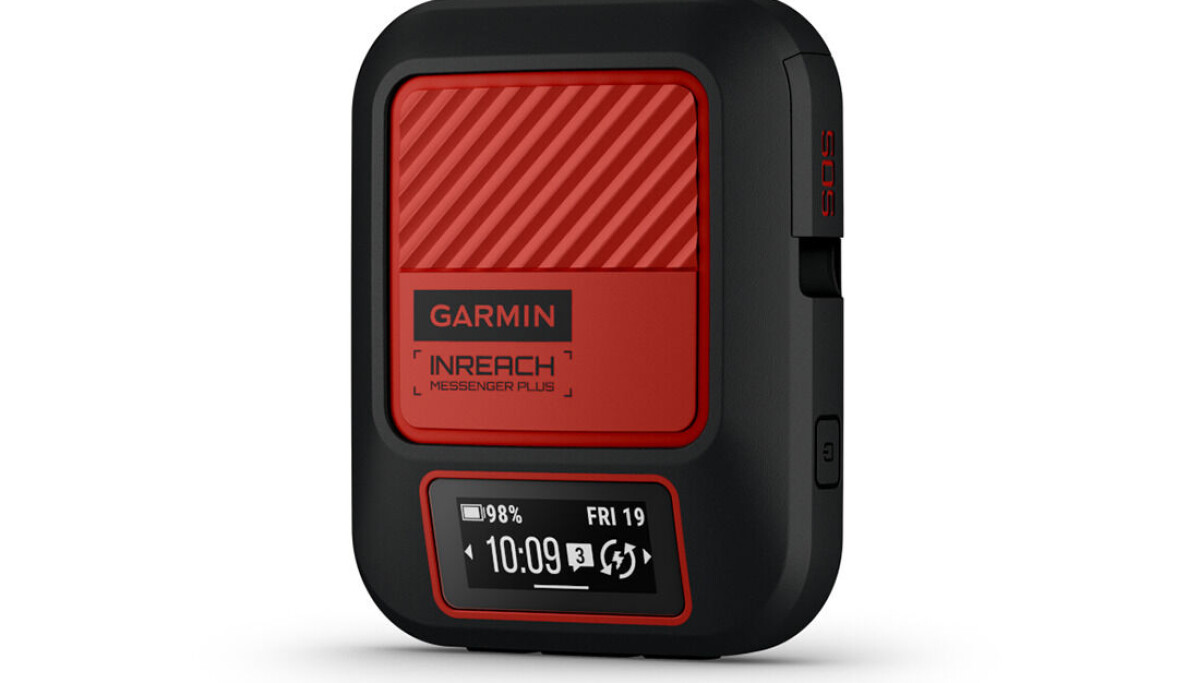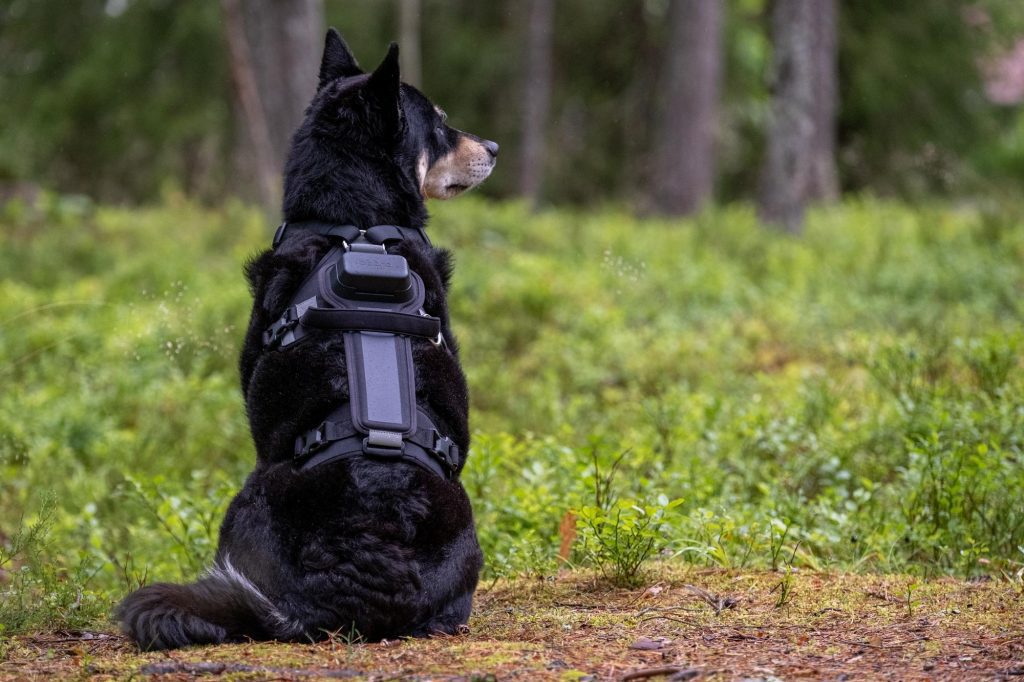The Spåra Dog is a product that is a combination of two different parts, the Spåra Pro mini transmitter which can be used to keep track of everything possible, but what makes it particularly adaptable to dogs is the harness that comes with it. The transmitter can be attached to the package, but also a board that is used to recharge the transmitter so that the battery life, according to Spåra, is unlimited in principle. The transmitter is then linked to the Spåra app and you can then follow the transmitter at different intervals for location information updates.
How it works?
The Spåra transmitter has a built-in SIM card and a GPS transmitter that together send information to the app in your phone. If the device lacks GPS reception for some reason, it can use cell towers to give you a location, but the GPS security will then be much worse. The third option is to use the phone’s Bluetooth connection for GPS, but then the transmitter is so close that you may not actually be using it. The transmitter can be used partly in a small rubber casing and with a Velcro strap to attach to a necklace or belt. But the point of the Spåra Hund is the belt, or what makes it different than just buying the transmitter separately. On the harness, the transmitter can be inserted into a small box that is in turn connected to a large solar panel that extends in turn on the dog’s back. This solar panel, which has different technology than normal solar panels, can charge the transmitter in all kinds of light. No matter whether it is outdoors in the sunlight or indoors it is only lit by indoor lighting. This is what should give the transmitter nearly unlimited battery life.
Using TrackDog
The harness, which is the same with the Spåra hund, is quite flexible to fit and fits relatively well with a test dog (Lapland Vallhund is about 44cm high and 18kg in weight). On the other hand, I quickly find that the solar panels make the belt a bit stiff and somewhat lumpy. The dog is used to various tools and doesn’t seem to care much, but spontaneously I probably didn’t want to leave the dog at large to work in, say, thick woods with the harness on, it looks more like it could get stuck or cause the dog to be unable to Move freely. However, it must be said that the test dog is probably in the lower size range for what the harness should be used on, and may be appropriate for a larger dog.
However, this talk of solar panels providing unlimited battery life doesn’t seem to be mere rhetoric. I left the belt with the transmitter in its box under a pallet at home for five weeks, only accessed by poor daylight for those five weeks, but when I checked the battery it was (according to the battery indicator) about 25% left. So if the transmitter had sat on a dog with the solar panels outside in broad daylight, it probably would have charged better. Admittedly, you might want to have the transmitter in its “live” mode where it sends an update every 30 seconds, which draws more electricity, but it’s controllable from the app, so if your dog runs away, you can choose Live mode is turned on when you’re about the dog. Other modes provide updates either once every hour, or once every twelve hours if they have been stable for a long time. If it suddenly starts to move or suddenly stops, it will send a location to update. This means that for active use, the normal mode is not particularly useful, and getting an update once every hour does not provide particularly detailed information. It is very similar to the live mode and even has a few sporadic updates. A dog can move a great distance in 30 seconds, which means it can be hard to find a moving dog if you only get information about where it was half a minute ago. At least a dog doesn’t want to be found. Battery life is good even in live mode. For me, the transmitter had about half a charge left after a day in live mode.
The app is relatively straightforward and easy to use. You can plan the protection zones where you will get a ping if the transmitter enters or leaves the area (you can choose how to leave the transmitter, on entry/exit or both). You can also record the past movements of your transmitter and you can then see how it has moved over a specific period of time. Each update is shown as a blue dot and the path to the next dot is shown as a thin black line.
cost
When you buy a tracking dog, you can either choose to have it as a subscription service where you pay either 289 (1 year), 165 (2 years) or 119 kroner (3 years) per month or you can solve the whole thing with one piece paying 2990, 3390 or 3690 kr ( same time period). Thus, the time you pay for is when the service works, and when the time comes, you need to renew the service to continue using it.
Summary
Track Dog is easy to use, and it tracks well, although it would be nice to have a higher refresh frequency as an option. The harness with the solar panel provides good battery life for the transmitter, which can be good if the harness fits your dog. If you are hunting or for other reasons have abandoned your dog for a long time, it may be a good idea, otherwise the transmitter will work fine even without the specified tool. Then it will be smoother, but the battery life will of course be shorter.

“Entrepreneur. Freelance introvert. Creator. Passionate reader. Certified beer ninja. Food nerd.”









More Stories
Logitech Steering Wheel News: New Steering Wheels, Gear Lever, and Handbrake in Direct Drive Series
Garmin Launches inReach Messenger Plus App
Why Rare Earth Metals for Electric Cars Are Crucial for Modern Mobility